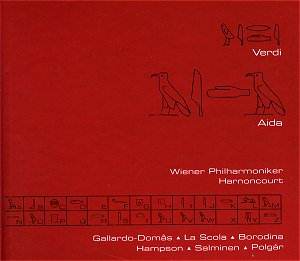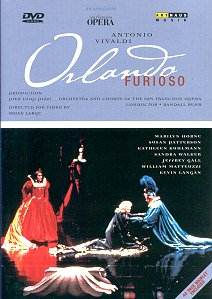 Composer: Giuseppe Verdi (1813-1901)
Composer: Giuseppe Verdi (1813-1901)
Works: Aida
Performers: Christina Gallardo-Domâs (soprano), Vincenzo La Scola (tenor), Olga Borodina (mezzo-soprano), Thomas Hampson (baritone), Laszló Polgár (bass), Matti Salminen (bass), Kurt Streit (tenor), Dorothea Röschmann (soprano)
Recording: Vienna Philharmonic Orchestra/Nikolaus Harnoncourt, recorded in the Musikverein, Vienna, January to April 2001
Label: TELDEC
Verdi’s “Aida,” a monumental spectacle that has graced the operatic canon since its premiere in 1871, remains a formidable challenge for performers and conductors alike, demanding not merely vocal prowess but also a nuanced understanding of its dramatic intricacies. This recording, led by Nikolaus Harnoncourt, presents a fascinating confluence of established and emerging talent, set against the lush backdrop of the Vienna Philharmonic Orchestra, which lends its signature richness to the score. Harnoncourt’s approach, while rooted in historically informed practices, navigates the delicate balance between authenticity and the operatic grandeur that “Aida” embodies, making for a compelling, if at times uneven, listening experience.
The orchestra’s opening, a daunting venture for the violins, is executed with commendable intonation, immediately establishing Harnoncourt’s commitment to precision. The distinctive sound of gut strings offers a unique texture, yet the gloss of the Vienna Philharmonic’s strings soon emerges, creating an ethereal quality that is particularly effective in the opera’s more mystical passages. Harnoncourt’s orchestral direction bears a captivating tension; the brass section, heralding the Triumphal March with remarkable virility, commands attention without overwhelming the singers. The use of specially crafted ‘Egyptian’ trumpets reflects Harnoncourt’s innovative approach to the score, enhancing the ceremonial aspects of the music. Despite some instances where orchestral dynamics overshadow vocal lines, the conductor’s careful pacing allows for the grandeur of the piece to unfold without haste, respecting the opera’s inherent drama.
Vincenzo La Scola’s portrayal of Radames presents a mixed bag. His initial foray into the iconic “Celeste Aida” is marked by a palpable struggle for the high notes that, while ultimately fulfilling their dramatic purpose, lack the effortless ease that one expects from a tenor in this role. The discomfort is somewhat alleviated in ensemble pieces where his confidence appears bolstered by the surrounding voices. Conversely, Christina Gallardo-Domâs emerges as a standout, displaying a vibrant interpretation of Aida that blossoms beautifully throughout the recording. Her “Ritorna vincitor” is both assertive and tender, revealing a nuanced understanding of the character’s inner conflict. Gallardo-Domâs navigates the emotional arcs of the score with grace, particularly in the Nile Scene, where her lyrical lines intertwine compellingly with the orchestration.
Olga Borodina’s Amneris is a formidable presence, her rich, dark timbre adding depth to the role’s complexities. The confrontation with Aida in Act Two is a highlight, where Borodina’s passionate delivery captures the character’s volatile emotions with striking clarity. Meanwhile, Thomas Hampson’s Amonasro, while an unconventional choice, delivers an earnest and multifaceted performance, portraying the character’s shifts from humility to fierce patriotism with commendable intensity. The duet between Amonasro and Aida in Act Three is particularly noteworthy for its dramatic tension, showcasing Hampson’s ability to infuse his character with both vulnerability and authority.
The audio engineering of this recording deserves mention, as it captures the vibrancy of the orchestra and the clarity of the vocal lines, although a slight imbalance occasionally favors the orchestral forces. The saccharine moments, particularly the sacred dances, are imbued with a sensuous quality that evokes the exoticism Verdi intended. Harnoncourt’s emphasis on dynamic contrasts, particularly the ppp markings, draws attention to the score’s subtleties, although this sometimes leads to a lack of vocal presence in climactic moments, an essential element in operatic performance.
This recording of “Aida” stands out for its strong orchestral performance and the remarkable contributions of Gallardo-Domâs and Borodina. While some vocal challenges persist, particularly among the male leads, the overall execution offers a glimpse into the grandeur and complexity of Verdi’s masterpiece. Harnoncourt’s interpretation, while not without its flaws, ultimately captures the operatic essence of “Aida,” combining historical insight with the dramatic fervor that the work demands. The result is a recording that, despite its shortcomings, is richly rewarding for both seasoned aficionados and newcomers alike.



